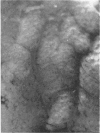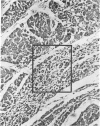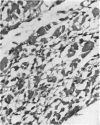Abstract
Focal myocytolysis, a form of myocardial damage, has been found to occur in about 8% of patients dying of intracranial lesions. Electrocardiographic abnormalities in patients with brain damage may be due to this. The cause of focal myocytolysis remains unknown, but if it could be prevented it might avert the patient's death from cardiac arrest or arrhythmia. Moreover, more than a minimal degree of this type of damage to the heart might make it unsuitable for transplantation.
Full text
PDF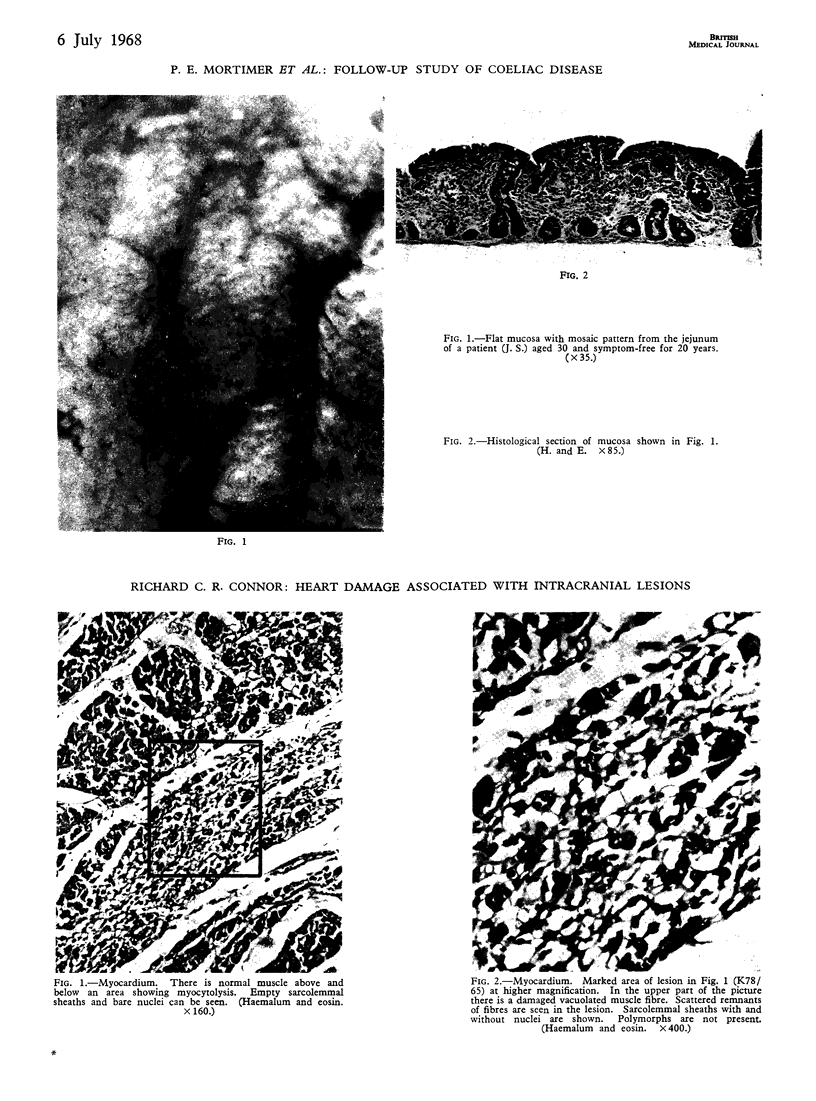
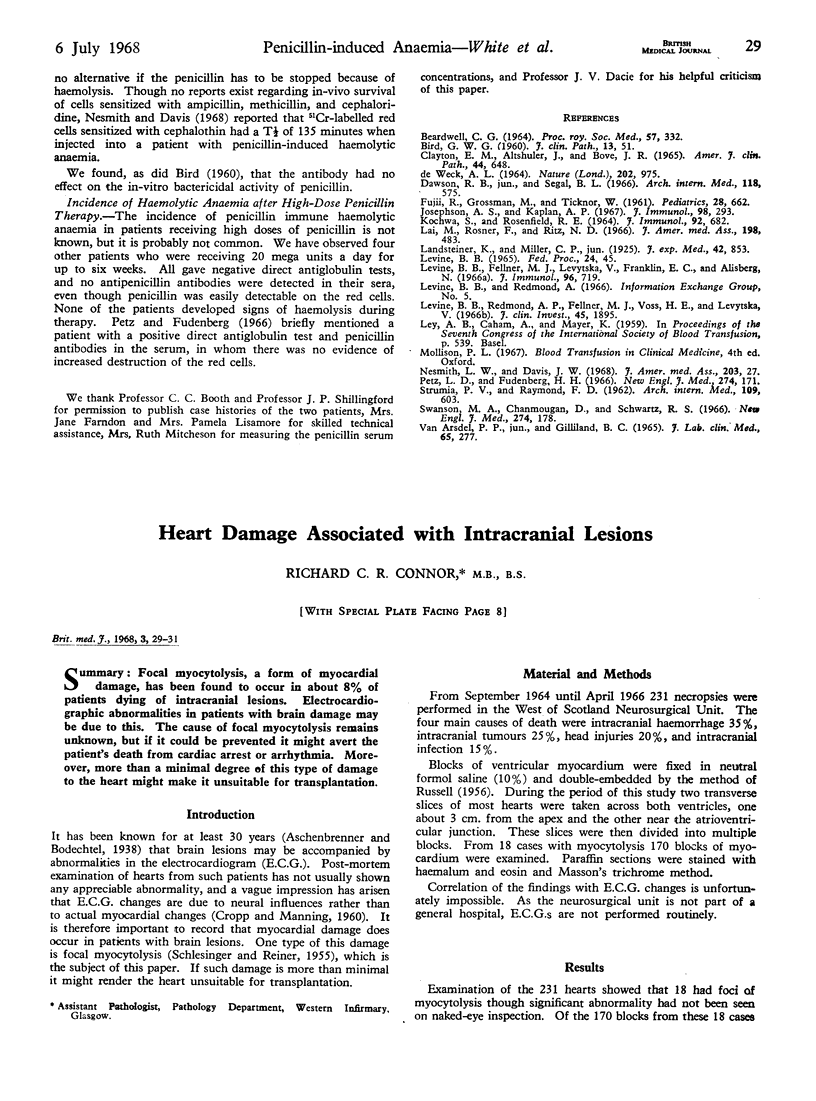
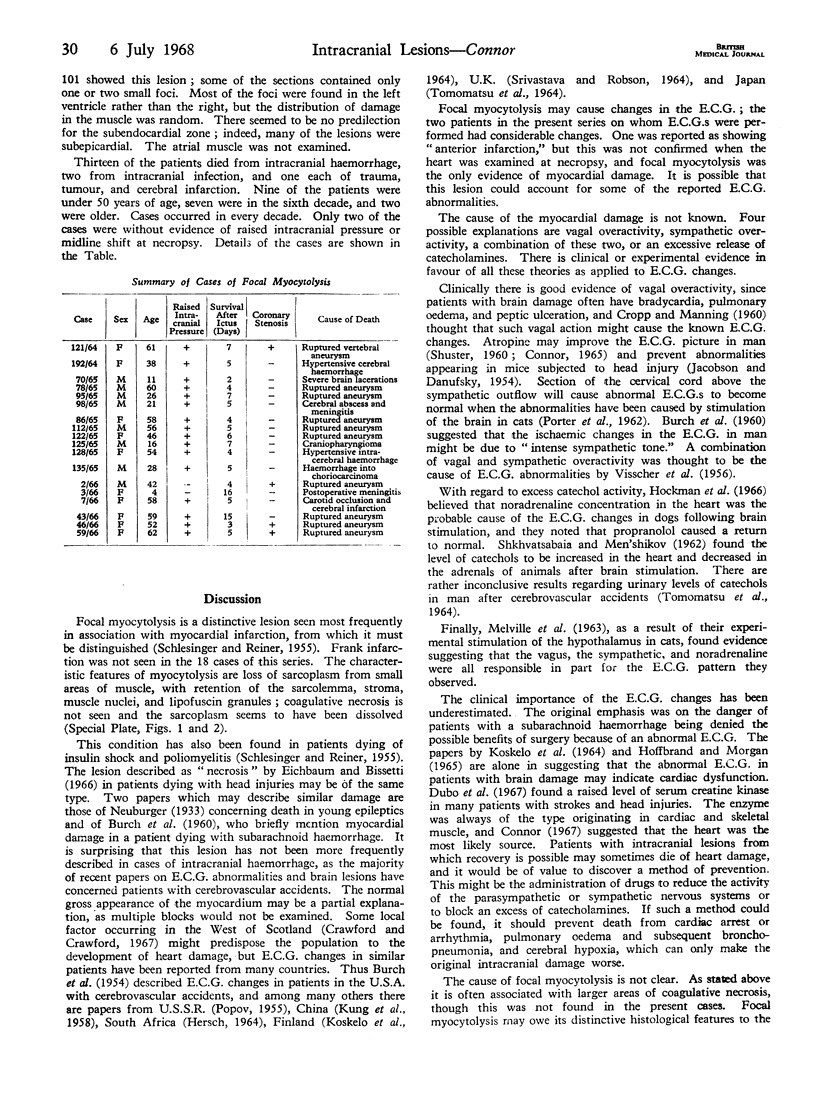
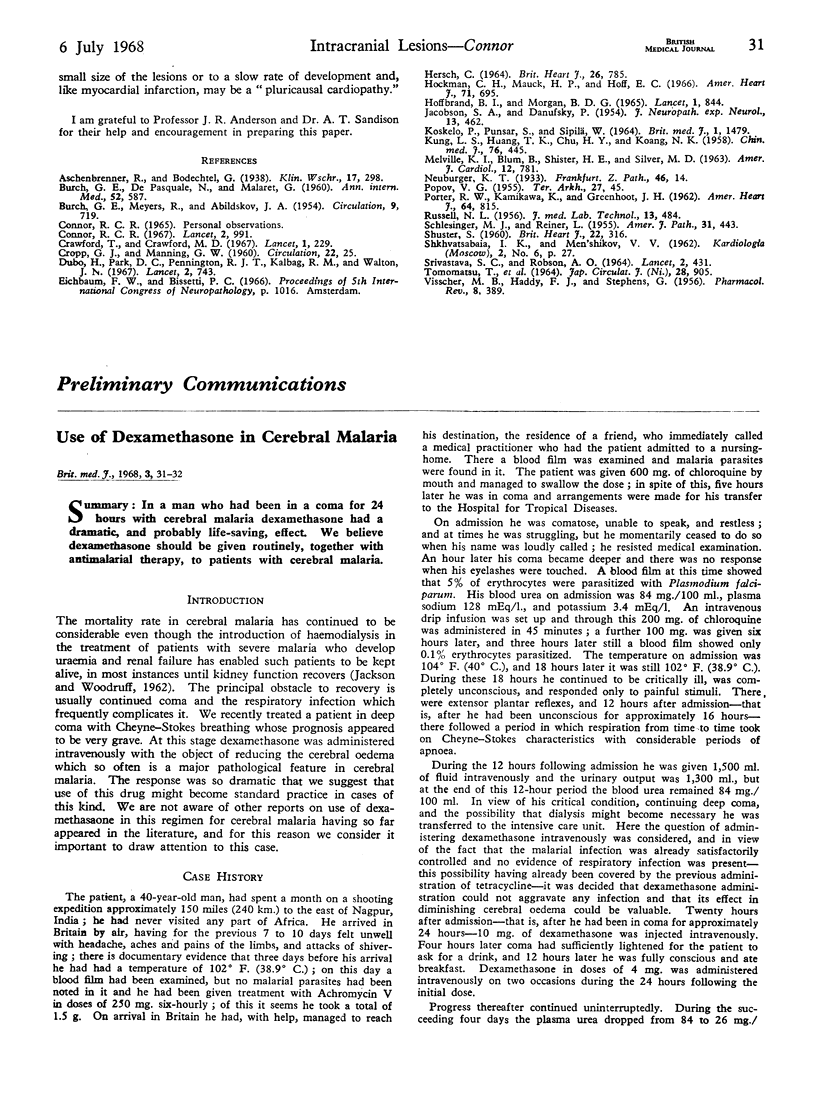
Images in this article
Selected References
These references are in PubMed. This may not be the complete list of references from this article.
- BURCH G. E., DEPASQUALE N., MALARET G. Selected problems in electrocardiography. Ann Intern Med. 1960 Mar;52:587–601. doi: 10.7326/0003-4819-52-3-587. [DOI] [PubMed] [Google Scholar]
- BURCH G. E., MEYERS R., ABILDSKOV J. A. A new electrocardiographic pattern observed in cerebrovascular accidents. Circulation. 1954 May;9(5):719–723. doi: 10.1161/01.cir.9.5.719. [DOI] [PubMed] [Google Scholar]
- CROPP G. J., MANNING G. W. Electrocardiographic changes simulating myocardial ischemia and infarction associated with spontaneous intracranial hemorrhage. Circulation. 1960 Jul;22:25–38. doi: 10.1161/01.cir.22.1.25. [DOI] [PubMed] [Google Scholar]
- Catovsky D., Sforza M. B. Phytohaemagglutinin in aplastic anaemia. Lancet. 1967 Nov 4;2(7523):991–992. doi: 10.1016/s0140-6736(67)90838-0. [DOI] [PubMed] [Google Scholar]
- Crawford T., Crawford M. D. Prevalence and pathological changes of ischaemic heart-disease in a hard-water and in a soft-water area. Lancet. 1967 Feb 4;1(7484):229–232. doi: 10.1016/s0140-6736(67)91297-4. [DOI] [PubMed] [Google Scholar]
- Dubo H., Park D. C., Pennington R. J., Kalbag R. M., Walton J. N. Serum-creatine-kinase in cases of stroke, head injury, and meningitis. Lancet. 1967 Oct 7;2(7519):743–748. doi: 10.1016/s0140-6736(67)91946-0. [DOI] [PubMed] [Google Scholar]
- HADDY F. J., STEPHENS G., VISSCHER M. B. The physiology and pharmacology of lung edema. Pharmacol Rev. 1956 Sep;8(3):389–434. [PubMed] [Google Scholar]
- HERSCH C. ELECTROCARDIOGRAPHIC CHANGES IN SUBARACHNOID HAEMORRHAGE, MENINGITIS, AND INTRACRANIAL SPACE-OCCUPYING LESIONS. Br Heart J. 1964 Nov;26:785–793. doi: 10.1136/hrt.26.6.785. [DOI] [PMC free article] [PubMed] [Google Scholar]
- HOFFBRAND B. I., MORGAN B. D. FUNCTIONAL SIGNIFICANCE OF ELECTROCARDIOGRAPHIC CHANGES ASSOCIATED WITH SUBARACHNOID HAEMORRHAGE. Lancet. 1965 Apr 17;1(7390):844–845. doi: 10.1016/s0140-6736(65)91377-2. [DOI] [PubMed] [Google Scholar]
- Hockman C. H., Mauck H. P., Jr, Hoff E. C. ECG changes resulting from cerebral stimulation. II. A spectrum of ventricular arrhythmias of sympathetic origin. Am Heart J. 1966 May;71(5):695–700. doi: 10.1016/0002-8703(66)90322-x. [DOI] [PubMed] [Google Scholar]
- JACOBSON S. A., DANUFSKY P. Marked electrocardiographic changes produced by experimental head trauma. J Neuropathol Exp Neurol. 1954 Jul;13(3):462–466. doi: 10.1097/00005072-195407000-00007. [DOI] [PubMed] [Google Scholar]
- KOSKELO P., PUNSAR S., SIPILAE W. SUBENDOCARDIAL HAEMORRHAGE AND E.C.G. CHANGES IN INTRACRANIAL BLEEDING. Br Med J. 1964 Jun 6;1(5396):1479–1480. doi: 10.1136/bmj.1.5396.1479. [DOI] [PMC free article] [PubMed] [Google Scholar]
- KUNG L. S., HUANG T. K., CHU H. Y., KOANG N. K. The electrocardiogram in cerebrovascular accidents. Chin Med J. 1958 May;76(5):445–454. [PubMed] [Google Scholar]
- MELVILLE K. I., BLUM B., SHISTER H. E., SILVER M. D. CARDIAC ISCHEMIC CHANGES AND ARRHYTHMIAS INDUCED BY HYPOTHALAMIC STIMULATION. Am J Cardiol. 1963 Dec;12:781–791. doi: 10.1016/0002-9149(63)90281-9. [DOI] [PubMed] [Google Scholar]
- PORTER R. W., KAMIKAWA K., GRREENHOOT J. H. Persistent electrocardiographic abnormalities experimentally induced by stimulation of the brain. Am Heart J. 1962 Dec;64:815–819. doi: 10.1016/0002-8703(62)90180-1. [DOI] [PubMed] [Google Scholar]
- RUSSELL N. L. A rapid double-embedding method for tissues, using an automatic tissue processing apparatus (histokinette-histokine). J Med Lab Technol. 1956 Jul;13(7):484–486. [PubMed] [Google Scholar]
- SCHLESINGER M. J., REINER L. Focal myocytolysis of the heart. Am J Pathol. 1955 May-Jun;31(3):443–459. [PMC free article] [PubMed] [Google Scholar]
- SHUSTER S. The electrocardiogram in subarachnoid haemorrhage. Br Heart J. 1960 Jun;22:316–320. doi: 10.1136/hrt.22.3.316. [DOI] [PMC free article] [PubMed] [Google Scholar]
- TOMOMATSU T., UEBA Y., MATSUMOTO T., ODA M., IKOMA T., KONDO Y., IJIRI Y. [ELECTROCARDIOGRAPHIC OBSERVATIONS AND URINARY EXCRETION OF CATECHOLAMINES IN CARDIOVASCULAR DISORDERS]. Jpn Circ J. 1964 Nov;28:905–912. doi: 10.1253/jcj.28.905. [DOI] [PubMed] [Google Scholar]



